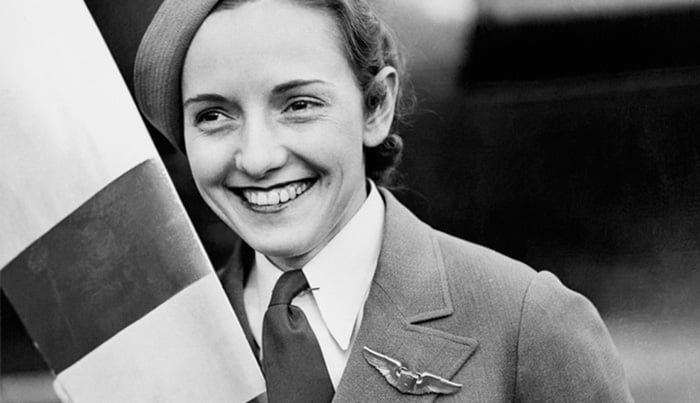Flight attendants
In the clouds since 1912

An icon in the sky
For decades they have been the friendly, welcoming figure always there to help us feel comfortable and put our minds at ease. But what do we really know about flight attendants? Come with us now as we explore their history, their changing representations and symbolism, and their place in the modern world.
Discovering the Hostess World
History, style and much more
Could you ever imagine a flight without the reassuring presence of flight attendants there to help us? A vital part of the cabin crew, they emanate professionalism and, even though the safety presentations might sometimes seem a bit redundant to habitual travelers, they are trained to be somehow true “adventurers”, able to deal with many difficult situations.
Beyond their neat appearance hides the history of a multifaceted profession, reflecting the change of times. That is true both for their role and for their appearance: a true fashion icon throughout the decades, the flight attendant is an icon to the airline world.
Interesting, isn’t it? Let’s go deeper and follow their development from the very beginning!
Share the infographic in your page
A century of history

The selection of flight attendants has always mirrored the times they have lived in. Their role has been profoundly shaped by war and peace, gender, race and culture.
A little known fact is that the first flight attendants were actually male. Pioneers like Heinrich Kubis in 1912 served the role of steward, an all male profession that somewhat mirrored the historical male 'butler' tradition.
However, that imagery completely changed during the years of the Great Depression when women were called into new areas of employment. Ellen Church was the first female flight attendant, hired by United Airlines in 1930. As a previously registered nurse, she set a new standard of what it meant to be a flight attendant.
Female flight attendants quickly replaced male ones and by the end of the 1930s it could have been considered an almost entirely female role. During the 30s and the 40s, their role expanded to include a wider range of tasks, reflecting the need for women in auxiliary roles during depression and war.
They had a multitude of duties which included first aid, cabin repairs, and even occasionally repainting the exterior of the plane in between flights! In addition, despite gender conformity returning in the 50s, female flight attendants were still considered to be extremely important and, as a result, their number didn’t reduce: on the contrary, it paved the way for the "Air Hostess" we know and love today.
That was again turned on its head during the Swinging 60s and 70s, when their role was largely increased by their fascination and allure. They became a new iconic figure, up to the point that the American airline, National Airlines, named its own planes after several air hostesses in 1970. They also became a true fashion icon, a symbol for the airlines and representatives of a unique and very peculiar style.
View from the tailor
During the second half of the century, uniforms developed into true symbols themselves. Even if the previous years had already seen them strongly related to each airline’s cultural background and to each country’s latest fashion, they started to turn into a true representation of local habits, as well as a mirror of the decades flowing by. This is particularly evident in uniforms such as the Emirates airline’s ones: remarkably elegant tailoring that reflects local culture and is a style icon at the same time.
From Yves Saint Laurent to Valentino and Vivienne Westwood, many famous hands have been redesigning the image of the flight attendant. Growing increasingly in terms of elegance and value, Qatar Airways and Air France in particular are renowned for their flight attendants' uniforms.
Today, the modern flight attendant has returned to its more functional role of the past. Primarily, they are concerned with our safety, and secondly with our comfort. They are trained in first aid like the nurses of the past, and know the safety and security aspects of their jobs inside out. Yet where hospitality is concerned, they have retained the highest professional standards of courtesy and respect. In addition, many more men have rejoined the profession since 1980.
Uniforms today reflect functionality and professionalism. British Airways, for example, broke the mould in 2016 when they decided to allow women to wear trousers should they wish to. Many female flight attendants had campaigned in favour of trousers, arguing in terms of practicality and functionality. The decision has been universally praised and seen as 'taking the industry into the 21st century'.
Today, flight attendants are an incredibly important part of the crew. National Flight Attendant Day is even celebrated annually in their honour on May the 31st. In several ways, they are a perfect example of commitment: for instance, the oldest airline hostess is 80 years old, and she still flies with American Airlines.
«To most people, the sky is the limit. To those who love aviation, the sky is home»
![]()
Anonymous

